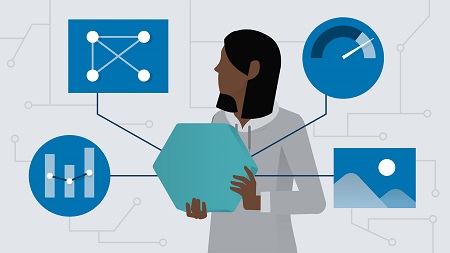
English | MP4 | AVC 1280×720 | AAC 48KHz 2ch | 2h 57m | 550 MB
Machine learning can make your applications faster and more intelligent. You can analyze customer data such as voice and text input, images, and video, and take action without human intervention. Google Cloud Platform (GCP) offers a competitive set of machine learning services for nearly every type of architecture, including serverless computing, containers, and virtual machines. Learn how to design your own machine learning solutions using GCP, in this introductory course with instructor Lynn Langit. Lynn shows how to identify your requirements and map them to services such as the GCP machine learning APIs—Cloud Vision, Cloud Speech-to-Text, Cloud Video Intelligence, and more—and GCP AutoML, which puts the same APIs behind an easy-to-use interface. Then get an overview of the custom ML models and deep neural networks that are possible in Google Cloud ML Engine. Finally, review five different practical examples of GCP machine learning, including a chat bot, an image search application, and an on-device Internet of Things application.
Topics include:
- Hosting options: Serverless, containers, and virtual machines
- Enabling the GCP ML AIs
- Preparing data with Cloud Dataflow and Dataprep
- Modeling predictions for images, video, text to speech, and cloud translation
- Machine learning with AutoML
- Advanced machine learning and deep learning
- Machine learning architectures
Table of Contents
1 Build complete solutions with machine learning services
2 What you should know
3 About using cloud services
4 Business scenarios for machine learning
5 Which algorithm should you use
6 GCP AI servers vs. platforms
7 Enable GCP ML APIs
8 Data preparation with Cloud Dataflow and Cloud Dataprep
9 An ML notebook in action Colaboratory
10 An ML notebook in action Set up Cloud Datalab
11 An ML notebook in action Use Cloud Datalab
12 Overview of GCP ML APIs
13 Predict via the Cloud Vision API for images
14 Predict via the Cloud Video Intelligence API for video
15 Predict via the Natural Language API for NLP
16 Predict via the Text-to-Speech API
17 Predict via the Speech-to-Text API
18 Predict via the Cloud Translation API
19 Predict via BigQuery ML
20 Understand Cloud AutoML services
21 Understand AutoML Vision
22 Prepare data and labels for AutoML Vision
23 Train model for AutoML Vision
24 Evaluate model with AutoML Vision
25 Predict using a trained AutoML Vision model
26 Why build custom ML models
27 Using containers to host ML models
28 Use Cloud ML Engine
29 Evaluate Cloud ML Engine output
30 Scale custom ML models
31 Understanding deep learning
32 Work with TensorBoard
33 Work with Keras for TensorFlow
34 GPUs and TPUs for TensorFlow
35 TensorFlow for JavaScript and mobile
36 Chatbot with ML
37 Image search with Cloud Vision and Cloud ML
38 GCP serverless machine learning architecture
39 GCP machine learning with structured data
40 GCP ML service for IoT apps
41 Next steps
Resolve the captcha to access the links!